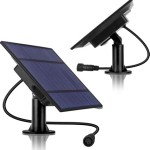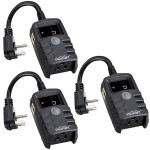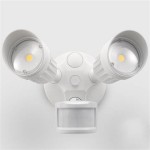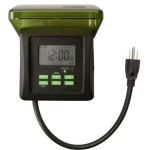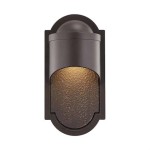12V DC Outdoor String Lights: Illuminating Your Space Safely and Efficiently
Outdoor string lights have become a popular choice for enhancing the ambiance of patios, gardens, and other outdoor spaces. Among the various options available, 12V DC outdoor string lights offer a unique blend of safety, energy efficiency, and versatility. This article will delve into the characteristics, advantages, and practical considerations of using 12V DC outdoor string lights.
The key distinction of 12V DC string lights lies in their low-voltage operation. Unlike traditional 120V or 240V AC string lights, these lights operate on a much lower voltage, powered by a direct current source. This fundamental difference has implications for safety, installation, and overall performance. Understanding these implications is crucial for making informed decisions about outdoor lighting applications.
Safety Considerations of 12V DC Systems
The primary advantage of 12V DC outdoor string lights is their enhanced safety profile. The lower voltage significantly reduces the risk of electric shock, making them particularly suitable for areas where children or pets might be present. While no electrical appliance is entirely risk-free, the reduced voltage of a 12V DC system mitigates the potential for serious injury in the event of accidental contact with exposed wiring or damaged components.
This inherent safety feature makes 12V DC string lights a preferable option for locations where moisture is a concern. Rain, snow, and humidity can increase the risk of electrical hazards with high-voltage systems. The lower voltage of a 12V DC system minimizes the risk of electrical mishaps in wet environments. The difference is substantial; a shock from household mains voltage AC can easily be fatal, while a shock from 12V DC is typically harmless. Proper insulation and weatherproofing are still important for all outdoor electrical installations, but the inherent safety of low voltage systems is a critical advantage.
Furthermore, the lower voltage allows for greater flexibility in installation. While local electrical codes often mandate licensed electricians for mains voltage wiring, low-voltage systems are often permissible for DIY installation, depending on local regulations. This simplifies the installation process and reduces the overall cost. However, it is crucial to always consult local electrical codes before commencing any electrical work, regardless of the voltage.
Despite the lower voltage, proper safety practices are still essential. Inspect the lights and wiring regularly for any signs of damage, such as frayed wires or cracked insulation. Ensure that all connections are securely fastened and properly weatherproofed. Never overload the power supply or use damaged components. By adhering to these basic safety guidelines, users can further minimize the risk of electrical hazards.
Energy Efficiency and Powering Options
Another significant advantage of 12V DC outdoor string lights is their improved energy efficiency. These lights typically utilize LED (Light Emitting Diode) technology, which consumes significantly less power than traditional incandescent or halogen bulbs. LEDs convert a higher percentage of electrical energy into light, reducing energy waste and lowering electricity bills. This makes them a more environmentally friendly and cost-effective lighting solution.
The energy efficiency of LEDs is directly related to the low-voltage operation of the 12V DC system. The lower voltage allows the LEDs to operate more efficiently and effectively. This translates to longer lifespan for the bulbs and reduced maintenance requirements. LEDs typically last for tens of thousands of hours, significantly longer than traditional bulbs, reducing the need for frequent replacements.
12V DC outdoor string lights offer a variety of powering options, adding to their versatility. The most common method involves using an AC-to-DC power adapter, also known as a transformer, to convert standard household AC voltage (e.g., 120V or 240V) into 12V DC. These power adapters are readily available and typically come with the string light set or can be purchased separately. The adapter should be appropriately sized to handle the total wattage of the string lights to avoid overloading the system.
Another powering option is the use of a 12V DC battery. This is particularly useful for locations where access to AC power is limited or unavailable. Solar panels can be used to charge the battery during the day, providing a sustainable and off-grid lighting solution. This is ideal for remote areas, camping trips, or temporary outdoor events. The battery capacity should be chosen based on the desired runtime of the lights and the power consumption of the LED string.
Furthermore, 12V DC string lights can be integrated into existing low-voltage landscape lighting systems. If a landscape lighting system already utilizes a 12V DC power supply, the string lights can be easily connected to the system, providing a unified and consistent lighting scheme. This simplifies installation and eliminates the need for separate power adapters.
Installation Considerations and Best Practices
The installation of 12V DC outdoor string lights is generally straightforward, but proper planning and execution are essential for ensuring safety and longevity. Before commencing the installation, carefully plan the layout of the lights and determine the appropriate length of string lights required. Measure the distance between the power source and the desired location of the lights to ensure that the power adapter or battery can reach the lights.
When stringing the lights, use appropriate mounting hardware, such as hooks, clips, or zip ties, to securely attach the lights to trees, fences, or other structures. Avoid stretching the lights too tightly, as this can put stress on the wiring and connectors. Leave some slack in the string to allow for natural movement and prevent damage from wind or temperature fluctuations.
It is crucial to weatherproof all connections to protect them from moisture and corrosion. Use weatherproof connectors or wrap connections with electrical tape to seal them from the elements. Regularly inspect the connections and wiring for any signs of damage or corrosion and address any issues promptly. Proper weatherproofing is essential for ensuring the long-term reliability of the lights.
When using an AC-to-DC power adapter, ensure that it is placed in a protected location, away from direct sunlight and rain. A weatherproof enclosure can be used to protect the adapter from the elements. Do not overload the power adapter by connecting too many string lights to it. Refer to the power adapter's specifications to determine its maximum wattage capacity.
If using a 12V DC battery, select a battery with sufficient capacity to power the lights for the desired duration. Consider using a deep-cycle battery, which is designed to be repeatedly discharged and recharged without damage. Protect the battery from extreme temperatures and weather conditions. Regularly check the battery's charge level and recharge it as needed.
The gauge (thickness) of the wiring can also be a significant factor, especially when powering longer runs of string lights. Thinner wires can experience greater voltage drop, which can result in dimmer lights at the end of the string. For longer runs, consider using thicker gauge wiring to minimize voltage drop and ensure consistent brightness throughout the string. Consult a wiring chart or an electrician for guidance on selecting the appropriate wire gauge for the specific application.
Finally, consider the color temperature of the LED bulbs. Color temperature is measured in Kelvin (K) and indicates the perceived warmth or coolness of the light. Lower Kelvin values (e.g., 2700K) produce a warm, yellowish light, while higher Kelvin values (e.g., 6500K) produce a cool, bluish light. Choose a color temperature that complements the surrounding environment and desired ambiance. Warm white light is often preferred for creating a cozy and inviting atmosphere, while cool white light is suitable for providing brighter and more functional illumination.
By carefully considering these installation considerations and best practices, users can ensure that their 12V DC outdoor string lights are installed safely, efficiently, and reliably, providing years of enjoyment.

12vdc Led Festoon Lighting Kit Rapid

Sl101 Led Low Voltage Bistro Outdoor String Lights Kings Lighting

Sl101 Led Low Voltage Bistro Outdoor String Lights Kings Lighting

Sl101 Led Low Voltage Bistro Outdoor String Lights Kings Lighting
Dc5v 12v Ws2811 Lumineuse Luces Outdoor Waterproof 12mm Full Color Digital Diffused Individually Addressable Rgb Led Pixel Modules String Lights Dc Ip68 0 3w

Outdoor String Lighting Dc 12v Ip65 Quality Led Clip Lights For Trees China Tree Belt Light Made In Com

Outdoor String Lighting Dc 12v Ip65 Quality Led Clip Lights For Trees China Tree Belt Light Made In Com
Addressable Rgb Pixel Module Led String Lights Outdoor

12vdc Led Fairy Lights Rapid

Led Lights 12volts Ac Specifically For Landscape Lighting Systems
Related Posts
